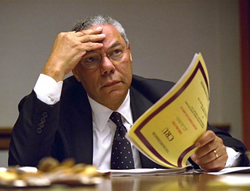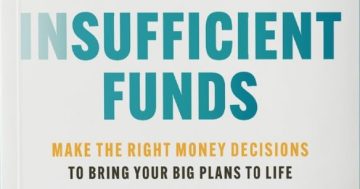John Eades* says decision-making is an art which shouldn’t be rushed, nor should it be inordinately delayed.
 We all make bad decisions. Even the most level-headed exceptional leaders not only have made poor decisions in the past, they will make them in the future.
We all make bad decisions. Even the most level-headed exceptional leaders not only have made poor decisions in the past, they will make them in the future.
What matters when it comes to decision-making isn’t necessarily the outcome; it’s having a method or strategy to rely on before making significant decisions that matters most.
Before you jump on my case, please let me explain by saying the outcome isn’t always the most important factor.
In the vast majority of cases, we have little control over the final result, but what we do have control over is the process and effort we put in that produces the outcome.
So the more significant the decision, the better our decision-making method should be.
Take Paul, the chief executive of a medium-sized business.
When growth sputtered, he began exploring the possibility of acquiring another company to fuel future growth.
In one of our coaching conversations, he said: “I am going to go with my gut on this decision and move forward with the acquisition.”
Since he didn’t have prior knowledge or experience in making acquisitions, I found it strange for him to rely on his gut.
So I passed along some wisdom to help him think differently since it affected so many people.
By definition, a decision is a conclusion or resolution reached after consideration.
It comes from the Latin word, meaning ‘to cut off’.
In Paul’s case, if he couldn’t articulate how and why he reached the decision of acquiring another company, the likelihood of its future success would be low.
Because at the end of the day, it would be the people in both companies that would produce the results, not the decision itself.
If you have a big decision, like taking a new job, getting married, or hiring someone, run it through one of these simple methods.
Method One: Three steps before you decide.
Decisions come in all different sizes. Some research suggests we make as many as 35,000 decisions every day.
Matt Confer of leadership development consultant, Abilitie told me: “The best leaders get buy-in from above them and below them by sharing why they are making the decisions.”
He shared a three-step method that leaders can use that enhances the way they come up with the final decision.
Challenge the Constraint: This is all about thinking outside the box and not just solving the problem in the fastest way possible.
It is a strategic step to think differently about the decision.
Embrace the Pre-Mortem: While thinking positively about an outcome is never wrong, an essential question to embrace is: “If this decision fails, what are five ways it would fail miserably?”
Thinking about how failure would happen will open up your eyes to problem areas that still need to be addressed.
Check the Basics: The more complex a decision, the more likely a small essential detail is missed, which can cause a big decision to fail.
Confer’s three-step method has a whiteboard session written all over it to help make your significant decision.
If done correctly, it will provide you with clarity about either moving forward or putting the brakes on a big decision.
Method Two: The 40-70 rule.
I coach leaders to leverage former Secretary of State Colin Powell’s 40-70 Rule when making a decision.
Powell (pictured) says: “Every time you face a tough decision, you should have no less than 40 per cent and no more than 70 per cent of the information you need to make the decision.”
If you decide with less than 40 per cent, you are taking a wild guess; if you wait until you have more than 70 per cent of the information, you are making it too late.
The 40-70 Rule is a powerful strategy to get comfortable with making more intelligent decisions before they are needed most.
Method Three: Remove the emotion and decide in the morning.
Not all decision-making methods have to be complicated, but just because it’s not complex doesn’t mean it’s easy.
Many poor decisions have been made because of emotions and timing.
Science has shown that we make worse decisions when we are emotional and when we have decision fatigue.
So instead of ignoring your emotions, embrace the uncomfortable pause, sleep on it, and then decide in the morning when you have a fresh brain.
If you happen to be like Paul in our opening story and you like making decisions by your gut, challenge yourself to articulate how and why you are making them.
If you aren’t like Paul and you love every punch of data you can get before you make a decision, lean into the 40-70 rule or the ‘three steps before you decide’.
All I ask is that you have the courage to make the decision and commit to it.
Part of a leader’s job is to make significant decisions, and you are just the person to do it.
*John Eades is the Chief Executive of LearnLoft a leadership development company. He is also the host of the Follow My Lead podcast. He can be contacted at johneades.com.
This article first appeared at johneades.com.











